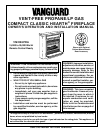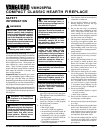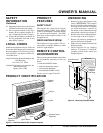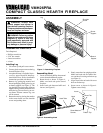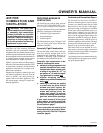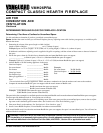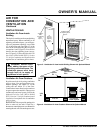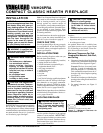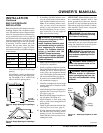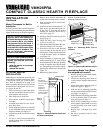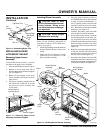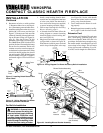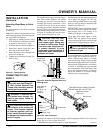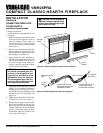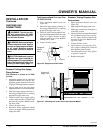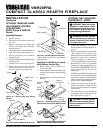Special offers from our partners!

Find Replacement BBQ Parts for 20,308 Models. Repair your BBQ today.
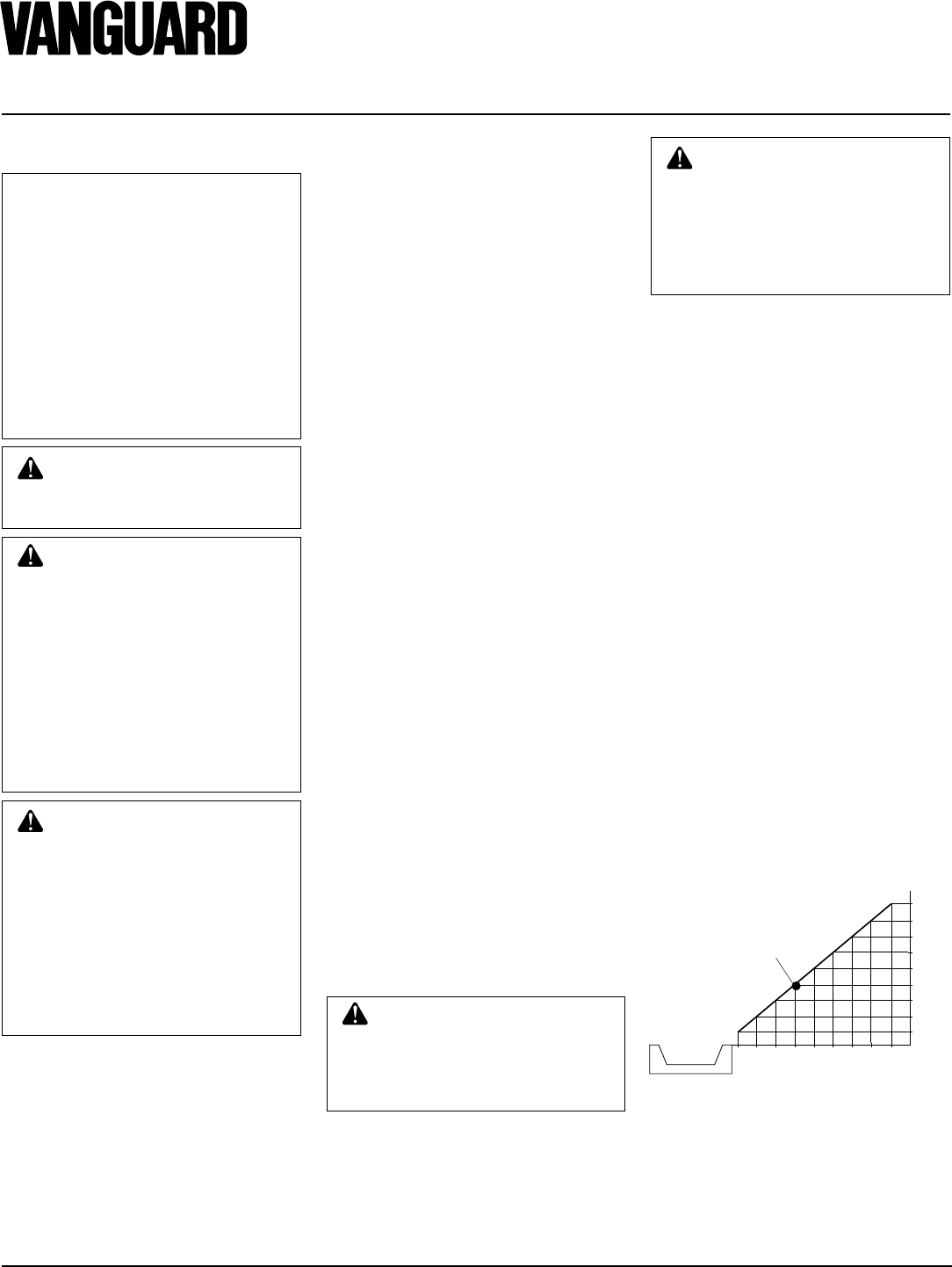
8
107034
COMPACT CLASSIC HEARTH FIREPLACE
VMH26PRA
®
For more information, visit www.desatech.com
CHECK GAS TYPE
Use only propane/LP gas. If your gas supply
is not propane/LP, do not install fireplace.
Call dealer where you bought fireplace for
proper type fireplace.
INSTALLATION ITEMS
Before installing fireplace, make sure you
have the items listed below.
• external regulator (supplied by installer)
• piping (check local codes)
• sealant (resistant to propane/LP gas)
• equipment shutoff valve *
• test gauge connection*
• ground joint union
• sediment trap
• tee joint
• pipe wrench
* An CSA/AGA design-certified equipment
shutoff valve with 1/8" NPT tap is an accept-
able alternative to test gauge connection.
Purchase the optional CSA/AGA design-
certified equipment shutoff valve from your
dealer. See Accessories, pages 28 and 29.
Note:
If desired, purchase a four-sided brass
trim kit for built-in installations. See Acces-
sories, pages 28 and 29.
WARNING: A qualified ser-
vice person must install fireplace.
Follow all local codes.
Note:
Your Vanguard fireplace is designed
to be used in zero clearance installations.
Wall or framing material can be placed
directly against any exterior surface of
your fireplace, except where standoff spac-
ers are integrally attached. If standoff spac-
ers are attached to your fireplace, these
spacers can be placed directly against wall
or framing materials.
Use the dimensions shown for rough open-
ings to create the easiest installation (see
Built-In Fireplace Installation, page 9).
WARNING: Maintain the mini-
mum clearances shown in Fig-
ure 7. If you can, provide greater
clearances from floor, ceiling,
and joining wall.
LOCATING FIREPLACE
WARNING: Never install the
fireplace
• in a bedroom or a bathroom
• in a recreational vehicle
• where curtains, furniture,
clothing, or other flammable
objects are less than 36 inches
from the front, top, or sides of
the fireplace
• as a fireplace insert
• in high traffic areas
• in windy or drafty areas
CAUTION: This fireplace cre-
ates warm air currents. These cur-
rents move heat to wall surfaces
next to fireplace. Installing fire-
place next to vinyl or cloth wall
coverings or operating fireplace
where impurities (such as to-
bacco smoke, aromatic candles,
cleaning fluids, oil or kerosene
lamps, etc.) in the air exist, may
discolor walls.
IMPORTANT:
Vent-free fireplaces add mois-
ture to the air. Although this is beneficial,
installing fireplace in rooms without enough
ventilation air may cause mildew to form from
too much moisture. See Air for Combustion
and Ventilation, pages 5 through 7.
CAUTION: If you install the
fireplace in a home garage
• fireplace pilot and burner must
be at least 18 inches above
floor.
• locate fireplace where moving
vehicle will not hit it.
For convenience and efficiency, install
fireplace
• where there is easy access for operation,
inspection, and service.
• in coldest part of room.
An optional blower kit is available from
your dealer (see Accessories, pages 28 and
29). If planning to use blower, locate fire-
place near an electrical outlet.
INSTALLATION
NOTICE: This heater is intended
for use as supplemental heat. Use
this heater along with your pri-
mary heating system. Do not in-
stall this heater as your primary
heat source. If you have a central
heating system, you may run
system’s circulating blower while
using heater. This will help circu-
late the heat throughout the
house. In the event of a power
outage, you can use this heater
as your primary heat source.
You can recess firebox into the wall. You
can also position fireplace in the optional
cabinet or corner mantels.
IMPORTANT:
Only use optional cabinet or corner mantels
specified in this manual. Purchase the op-
tional mantel from your dealer (see Acces-
sories, pages 28 and 29).
Minimum Clearances For Side
Combustible Material, Side Wall,
and Ceiling
A. Clearances from the side of the fireplace
cabinet to any combustible material and
wall should follow diagram in Figure 7.
Example:
The face of a mantel, book-
shelf, etc. is made of combustible ma-
terial and protrudes 3
1
/2" from the wall.
This combustible material must be 4"
from the side of the fireplace opening
(see Figure 7).
B. Clearances from the top of the fireplace
opening to the ceiling should not be less
than 42 inches.
C. For mantel clearances, see Figure 11
on page 10.
.5 2
7/16
7/8
1
3
/
4
3
1
/
2
5
1
/
4
7
8
3
/
4
10
1
/
2
12
1
/
4
1 4 6 8 10 12 14 16
FIREBOX
INCHES
INCHES
Figure 7 - Minimum Clearance for
Combustible to Wall
*Minimum 16 inches from Side Wall
*
Example



